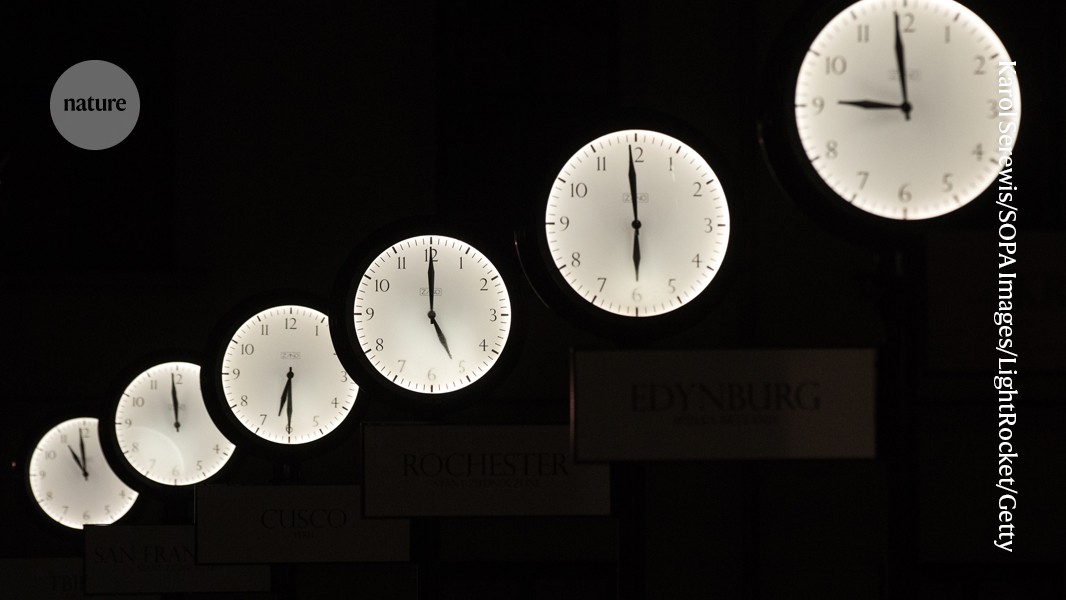Your perception of time is skewed by what you see

Features of a scene such as size and clutter can affect the brain’s sense of how much time has passed while observing it

Previous research has shown that our perception of time is linked to our senses.Credit: Karol Serewis/SOPA Images/LightRocket/Getty
How the brain processes visual information — and its perception of time — is heavily influenced by what we’re looking at, a study has found.
In the experiment, participants perceived the amount of time they had spent looking at an image differently depending on how large, cluttered or memorable the contents of the picture were. They were also more likely to remember images that they thought they had viewed for longer.
The findings, published on 22 April in Nature Human Behaviour1, could offer fresh insights into how people experience and keep track of time.
“For over 50 years, we’ve known that objectively longer-presented things on a screen are better remembered,” says study co-author Martin Wiener, a cognitive neuroscientist at George Mason University in Fairfax, Virginia. “This is showing for the first time, a subjectively experienced longer interval is also better remembered.”
Sense of time
Research has shown that humans’ perception of time is intrinsically linked to our senses. “Because we do not have a sensory organ dedicated to encoding time, all sensory organs are in fact conveying temporal information” says Virginie van Wassenhove, a cognitive neuroscientist at the University of Paris–Saclay in Essonne, France.
Previous studies found that basic features of an image, such as its colours and contrast, can alter people’s perceptions of time spent viewing the image. In the latest study, researchers set out to investigate whether higher-level semantic features, such as memorability, can have the same effect.
The researchers first created a set of 252 images, which varied according to the size of the scene and how cluttered it was, then developed tests to determine whether those characteristics affected the sense of time in 52 participants. For example, an image of a well-stocked cupboard would be defined as being smaller but more cluttered than one featuring an empty warehouse. Participants were shown each image for less than a second, and asked to rate the time they were shown a specific image as ‘long’ or ‘short’.
When viewing larger or less-cluttered scenes, participants were more likely to experience time dilation; thinking that they had viewed the picture for longer than they actually did. The opposite effect — time constriction — occurred when viewing smaller-scale, more cluttered images.
The researchers suggest two possible explanations for these distortions. One posits that visual clutter is perceived as harder to navigate and move through, whereas the other says that clutter impairs our ability to recognize objects, making it harder to mentally encode the visual information. These difficulties could both lead to time constriction.
Memorable sights
To investigate whether more-memorable images could have an effect on time perception, the researchers showed 48 participants a set of 196 images rated according to their memorability by a neural network. Participants not only experienced time dilation when looking at more-memorable images, but were also more likely to remember those images the next day.
The images were then applied to a neural-network model of the human visual system, one that could process information over time, unlike other networks that take in data only once. The model processed more-memorable images faster than less-memorable ones. A similar process in the human brain could be responsible for the time-dilation effect when looking at a memorable image, says Wiener. “It suggests that we use time to gather information about the world around us, and when we see something that’s more important, we dilate our sense of time to get more information.” This adds to converging evidence that suggests a link between memorability and increased brain processing, says van Wassenhove.
Questions remain about exactly how people perceive time and how this interacts with memory. “We’re still missing pieces of the puzzle,” says Wiener. The next step would be to validate the findings with a larger sample of participants, and to refine the model of the visual system, he adds. Van Wassenhove suggest that future studies could use neuroimaging to study brain activity during perception tests. Eventually, Wiener hopes to test whether the brain could be stimulated artificially to influence the way it processes time and memory.
doi: https://doi.org/10.1038/d41586-024-01169-3
This story originally appeared on: Nature - Author:Lilly Tozer


















